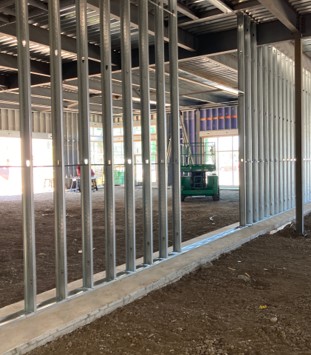Driving around familiar neighborhoods recently has been a n exciting trip down memory lane as well as an engaging look at the future. There are so many brands taking over existing retail space and transforming it into something interesting and new. Whether it is demising a large retail space or reimagining the use of a former restaurant, there is an incredible amount of creativity being implemented.
n exciting trip down memory lane as well as an engaging look at the future. There are so many brands taking over existing retail space and transforming it into something interesting and new. Whether it is demising a large retail space or reimagining the use of a former restaurant, there is an incredible amount of creativity being implemented.
Repurposing a former retail store for another use or brand can be an exciting opportunity to transform an existing space into something unique. Whether you're converting it into a different type of store or repurposing it, careful consideration and planning are essential for a successful transition. Here are a few key considerations to keep in mind as you go through the process.
1. Evaluate the Space Before embarking on a conversion project, it's crucial to evaluate the existing space and infrastructure. Assess the size, layout, and overall condition of the store. Consider whether it can accommodate the needs of your new venture or if any modifications are required. Understanding the space's limitations and potential will help you plan the conversion effectively.
Take note of the existing infrastructure such as plumbing, electrical systems, and HVAC. Determine if the utilities will need to be split if you are not taking the entire space. If you can locate as-built drawings it will help the architect and contractor you are working with evaluate existing conditions.
2. Adaptability and Flexibility When converting a former retail store, it's essential to prioritize adaptability and flexibility in the design and layout. Consider the future needs of your business and how the space can accommodate potential changes. Incorporate modular fixtures and furniture that can be easily rearranged or removed, allowing for future adjustments. This flexibility will ensure that your space remains functional and adaptable as your business evolves.
3. Building Codes and Regulations Understanding and complying with building codes and regulations is vital during the conversion process. Once you start making changes in an existing space you often will need to bring the space up to code regarding safety, accessibility, fire codes, and zoning regulations. Engage with local authorities or consult with professionals who can guide you through the necessary permits and approvals. Failure to comply with these regulations can lead to costly delays or even prevent your project from moving forward.
4. Budgeting and Timeframe Converting a former retail store into another use is not as straight forward as a new build. Create a detailed budget of items you will handle such as equipment purchases. Work with a contractor who has experience doing renovations to get an idea of potential costs, long lead items and timelines. Be sure to account for unexpected contingencies that may arise during the conversion process – such as product delays. Include in your timeframe for the construction process permits and any necessary inspections.
Converting a former retail store into another use or brand presents a wealth of opportunities for creative and innovative transformations. With the retail space coming to market, much of it in prime locations, exciting new things will be in retail centers soon.












